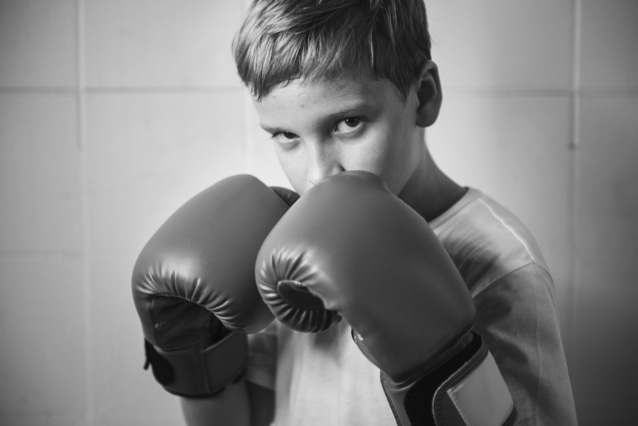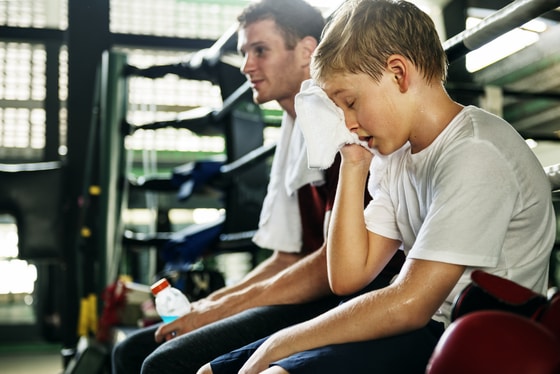Kickboxing for kids is a kind of mixed martial arts (MMA) in which punches and kicks are allowed.
It’s the result of merging karate with boxing, so it’s sometimes called “boxing with legs” or “karate in gloves.”
You may think that kickboxing sports are not suitable for kids, for a variety of reasons, so let’s delve deeper into this.
In this article, For Kids will outline the history, styles and types of kickboxing. We’ll look at what is the best age to start kickboxing for kids, and the potential benefits of this sport for your child.
We’ll also fill you in on the difficulties that your kid may encounter while playing kickboxing sports, and how to deal with those difficulties if they arise. Plus, we’ll educate you on how to choose kickboxing classes, a club and trainers for your kids.
Kickboxing for kids
Table of Contents
- 1. History
- 2. Styles
- 3. Types
- 4. Best age
- 5. Benefits
- 6.Disadvantages
- 7.Difficulties
- 8. Choose academy & Classes
- 9. Summary
Kickboxing history
Kickboxing is quite a young sport. It originated in the 1960s, at the peak of the popularity of Oriental martial arts such as karate, judo and Muay Thai.
At that time, there were many self-defense sports with different rules for fighting. Then, the idea of holding a tournament in which representatives of the different styles could participate came about.
The new kind of wrestling was first called full-contact karate, while “karate” was understood to mean any martial art. Adherents of traditional karate didn’t like the use of the name in this way, so a new term was adopted. “Kickboxing” was used first in Japan, then in the United States.
The first world tournament was held in 1974 in Los Angeles. Women’s competition was first included in the program in 1985.
Styles of kickboxing
1. Full-contact kickboxing
In full-contact kickboxing, opponents fight with each other at a professional level, while trying to earn points.
2. Semi-contact kickboxing
In semi-contact kickboxing, players learn all of the kickboxing movements, including self-defense routines.
Sparing is allowed, and the scoring system is based on successfully landing strikes with light contact only.
3. Light-contact kickboxing
Kids practice kickboxing in a controlled manner while wearing appropriate safety gear that allows for very light contact against another player.
4. Cardio kickboxing
In this type of kickboxing, there is no contact with a real opponent. Kickboxers perform kickboxing punches and strikes against an imaginary kickboxer.
Usually, this type of fighting takes place in a cardio gym class environment,. with music playing.
Types of kickboxing
According to the rules of kickboxing and the types of blows allowed in the game, there are two types:
1. American kickboxing
American kickboxing or full-contact kickboxing is based on karate, in which opponents are allowed to hit each other with punches and kicks, striking only above the waist.
At first, there were no rules in kickboxing as such. There were no limits on the force of the blows.
Headshots, sweeps, grabs and throws were allowed. The rules were drawn up over time, and throws and grabs, as well as the use of elbows and knees, were forbidden.
Athletes began to be divided into weight categories. The number of kicks for one round became regulated, with the kickboxer having to inflict at least eight strokes (now, it’s at least six).
These rule changes occurred because former kickboxers hardly ever worked with their feet, which contradicted the idea of kickboxing and reduced its entertainment value.
2. Japanese kickboxing
There are no serious differences between American and Japanese kickboxing. The differences are associated more with Thai boxing.
When Muay Thai penetrated Japan, it wasn’t preserved in its original form, but underwent some changes.
For example, in Japanese kickboxing, elbow strikes didn’t take root, as the audience didn’t like the frequent stoppage of fights due to injuries. The scoring system is also different.
What is the best age to start kickboxing lessons for kids?

The club determines the age at which children start kickboxing. Some kickboxing clubs accept children from five to six years and up, while others don’t accept kids until they’re eight or nine years old.
The approach to classes will be different for different age groups. For instance, younger children’s training focuses on general physical development and usually takes place in a playful way.
According to many kickboxing coaches, five to six years is the best age for kids to start kickboxing lessons.
Boys and girls: Is there any difference?
There is no difference between boys and girls when it comes to mastering the technique of martial arts and kickboxing.
Stages of kickboxing training lessons
There are four stages through which all kickboxers pass:
1. Initial training (usually from 10 years onward):
During the first two years, children improve their physical fitness and become familiar with the basic techniques of kickboxing. Training includes outdoor games, stretching and elements of acrobatics.
2. Training stage (from 12 years)
Throughout the next three years, children continue to improve their level of physical fitness and begin to participate in competitions and training camps.
3. Skill improvement (from 14 years)
The lessons become more focused on kickboxing skills and styles. Kids improve their endurance, speed and reaction time, and the number of competitions increases as well.
4. Higher mastery (from 15 years)
By this time, the athlete will have begun to develop their own style. Their weaknesses and strenghts will be visible in their manner of combat.
Weight & age Categories in kickboxing
According to the World Association of Kickboxing Organizations (WAKO), there are different age and weight categories, for all sports played on tatami, which means “the floor of the fighting area.” The categories are organized as follows:
Younger Cadets Category
Age: 10 to 12 years old.
Weight in kilograms (girls & boys):
- Less than 28
- Less than 32
- Less than 37
- Less than 42
- Less than 47
- Greater than 47
Older Cadets Category
Age: 13 to 15 years old.
Weight in kilograms (boys):
- Less than 42
- Less than 47
- Less than 52 kg
- Less than 57
- Less than 63
- Less than 69
- Greater than 69
Weight in kilograms (girls):
- Less than 42
- Less than 46
- Less than 50
- Less than 55
- Less than 60
- Less than 65
- Greater than 65
Juniors Category
Age: 16 to 18 years.
Weight in kilograms (men):
- Less than 57
- Less than 63
- Less than 69
- Less than 74
- Less than 79
- Less than 84
- Less than 89
- Less than 94
- Greater than 94
Weight in kilograms (women):
- Less than 50
- Less than 55
- Less than 60
- Less than 65
- Less than 70
- Greater than 70
Benefits of kickboxing for kids
- Builds self-confidence and helps kids overcome difficulties
- Teaches techniques of self-defense.
- Improves kids’ health and physical fitness
- Improves response time, co-ordination, flexibility, balance and agility
- Provides opportunity for making new friends
- Like all sports, the main benefit for kids should be fun
- A good sport for hyperactive kids to get rid of excess energy
- Strengthen the shoulder girdle, the arms and the abdominal muscles
Disadvantages of kickboxing for kids
- Potential trauma, such as bruises, pain in both hands or head injuries
- Kids may be afraid of fighting, bruises and abrasions at first
Choosing the correct equipment and following the instructions will reduce the risk of injury.
These disadvantages won’t be a serious problem at the amateur level, but may increase if the child starts to play on a professional level.
Difficulties your child may face while playing kickboxing
- Kickboxing requires force and high speed, which may overload on the child
- The child may not be able to cope with the psychological burden of kickboxing
- A child may lose their motivation due to the long training process
- At the beginning of training, a child will usually get tired quickly, which often affects the learning process
Kickboxing classes for kids
Children’s kickboxing classes: Prices
The average cost of children’s kickboxing classes ranges from $50 to $120 for 10 to 30 lessons.
Many kickboxing instructors will charge, on average, around $125 a month for weekly classes.
The price of classes for kids may be 20 to 25 percent less than adults.
Your child will also need kickboxing equipment, such as boxing gloves, a mouth guard, a chin guard and headgear.
How to choose a kickboxing club and trainer for juniors?

This process will depend on whether you’re targeting a club or a specific coach.
Choosing a club
To get started, go to the first free lesson, or visit it as a spectator if the rules allow.
Be sure that the number of children in the group doesn’t exceed what is stated, and pay attention to the training process (such as the timing of the warm-up and stretching).
Search for kickboxing clubs near you to make it easier for you and your kids.
Choosing a coach
Read all the information available about the coach, including how much they prepare the athletes for competition or how much success their students have achieved.
Pay attention to how the coach behaves with the children. Keep a close eye on whether they’re watching the children closely at the general training session or not.
Ask other parents why they’ve introduced their child to this particular coach.
If the coach hasn
If the coach hasn’t had much success, look at their personal achievements. And of course, be guided by whether your son or daughter likes the coach.
You may also be interested in: Badminton for kids | raise your child to be a champion.
Summary
Kickboxing is a good sport for kids, as it’ll help each child develop perseverance, dedication, courage, self-control, a strong will and the ability to think tactically.
A child can achieve a high-performance standing and become a champion at an official level. Even if the child plays kickboxing at the amateur level, they’ll be fit and more self-confident than they would be otherwise.
References

